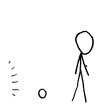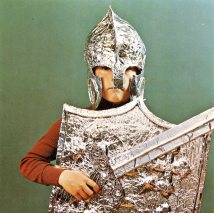This post is a nod to the new “gourmet peanut butter and jelly sandwiches” my school now offers for four dollars, nineteen cents for the more adventurous soul.
I’ll skip over the basic sandwich trivia and jump right to the peanut-butter-jelly of the issue.
Who ever thought to combine the salty, savory taste of peanut butter with the a spoonful of sappy-sweet strawberry jelly?
My research did not turn up a name of an inventor of the sandwich in question, but it did uncover some interesting history. Peanut butter, jelly, and bread were apparently included among American Army rations during World War II – though the idea of combining the three was already discussed as early as 1901, when Julia Davis Chandler mentioned it in The Boston Cooking School Magazine of Culinary Science and Domestic Economics. Peanut butter sandwiches were not an entirely new idea, but had previously been reserved for upscale events such as formal tea parties. As the price of peanut butter dipped, sandwiches with peanut butter became more common and particularly popular among America’s youths. According to Wikipedia – a very reliable source, I know – “a 2002 survey showed the average American will have eaten 2,500 of these sandwiches before graduating from high school.” Just take a moment to absorb that fact.
More about the peanut-butter-and-jelly sandwich:
http://www.bbb.org/blog/2012/04/happy-national-peanut-butter-and-jelly-day/
Take a few minutes to research one of your favorite foods. Does it have a culture or cult following? Where does it come from and how does global economy determine who eats it, when and for what occasions? Does it have any symbolic meaning or cultural significance? How do historical events shape the food we eat today? What is the context in which this food is traditionally consumed? And, finally, how does what you eat reflect what you are?
And now, as if you didn’t see this coming…
………………………………
BONUS:




















